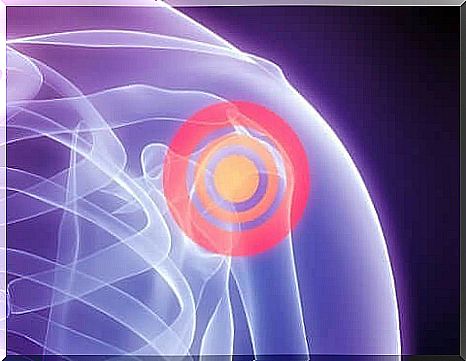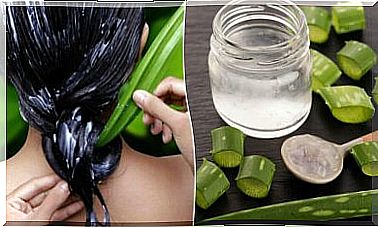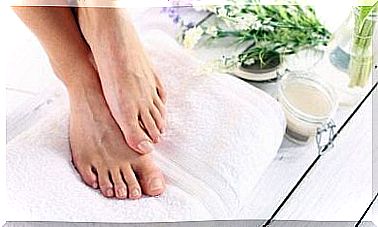Rotator Cuff Rupture: Phases Of Rehabilitation
If the rotator cuff ruptures, physiotherapy aims to center and strengthen the shoulder joint. It is also a preventive measure to prevent the shoulder from stiffening.

A rotator cuff is a group of muscles and tendons that encompasses the shoulder joint. Injury to this area can cause dull pain in the shoulder, which becomes worse when trying to sleep on the affected side. The risk of a rotator cuff rupture increases with age.
Rotator cuff rupture: symptoms
The pain caused by a rotator cuff injury can manifest itself in several ways:
- Dull pain, deep inside the shoulder.
- Difficulty sleeping, especially when sleeping on your side on your injured shoulder.
- Combing or touching the back is painful.
- The arm loses strength.
Treatment phases

Postoperative rehabilitation after the surgical intervention, in which the torn tendons are closed or the tear is reduced in size, must be carried out in constant consultation between the traumatologist and physiotherapist.
The ideal rehabilitation program enables healing and has a preventive effect against stiffening of the shoulder. However, it must be taken into account that every injury and every patient is different. Physiotherapy must therefore be adjusted individually to each patient in order to be successful.
Personalized rehabilitation for a rotator cuff injury
The rehabilitation phases must be individually adapted to each patient. The following aspects must be taken into account:
- Type and size of the crack
- Quality of the fabric
- Surgical intervention performed (open or arthroscopic)
- Repair technique
- Age
- Activities of the patient
- Personal goals of each patient
With large, complete or mass ruptures of the rotator cuff , the risk of re-injury is high. Slow rehabilitation is therefore important so as not to jeopardize the surgical repair performed.
If there is a risk of a stiff shoulder, however, it must be mobilized to rule out complications.
The rehabilitation phases depend on the regular examinations of the patient. In addition, a specific home exercise program is important at each stage to support physical therapy.
Rehabilitation program in the event of a rotator cuff rupture
There are two different rehabilitation programs:
1. Conservative method
The conservative method does not begin until 2 to 4 weeks after the treatment to first allow a partial recovery and avoid tissue stress.
In patients over 50 years of age, with a rupture of multiple tendons, a mass rupture or poor tissue quality , the conservative method is recommended.
2. Accelerated method
In this case, start therapy 2 to 4 weeks earlier because there is no risk of damaging the repaired structures or because early treatment is necessary.
With patients under 50 years of age, with smaller tears that only affect one tendon and with good tissue quality, start the standard therapy or the accelerated method as soon as possible.
Rehabilitation phases for a rotator cuff rupture
After the arthroscopic procedure to repair the rotator cuff, four different phases of rehabilitation begin.

1st phase immediately after the operation
Maintaining and protecting the repair in the postoperative phase (0 to 4 weeks after surgery) include the following measures:
- Splint to immobilize and stabilize the shoulder, which keeps the arm spread apart next to the body (abduction splint)
- This splint is also worn during sleep. That’s why it’s best to sleep in an adjustable armchair with a pillow under your arm.
- The splint is only removed for hygiene purposes and to perform specific exercises.
- Cryotherapy (cold therapy)
- Pendular exercises
- Active exercises for the elbow, wrist and hand in the entire joint area
- Stretching exercises for the spine
2nd phase: protection and gentle, active movements
It takes about four to ten weeks to move from early passive movement to active functional movement .
- After 4 weeks: passive mobilization in the supine position
- From the 6th week: complete passive mobilization, starting with actively supported and active mobility
- After 8 weeks: exercises for the shoulder blade and chest area, isometric and submaximal exercises, exercises in open kinetic chain
3rd phase: early strengthening
Start strengthening your muscles between the 10th and 14th week. This pursues the following goals:
- Complete active mobility
- Restoration of strength, potency and muscle resistance
- Neuromuscular and proprioceptive control
- Strengthening the muscles in the shoulder blade area
- Gradual resumption of daily activities
4th phase: advanced strengthening
Therapy continues until the functionality that existed before the injury is regained. It lasts between 14 and 22 weeks. The aims are:
- Complete active mobility without pain
- Resumption of sporting activities
- Regain normal strength, potency and muscle resistance
- Start of all activities









